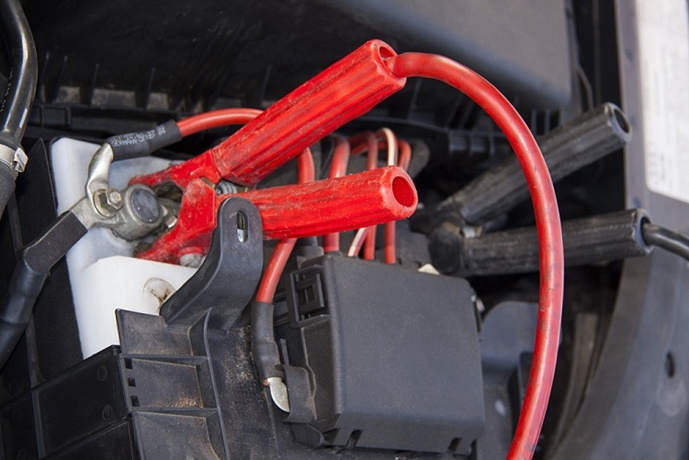Did you know that more than 11 million U.S. homes have their own RV? Needless to say, it’s becoming quite common.
Even if you plan on living in your RV full-time, there may be times when it is not needed.
Depending on your financial situation, how frequently you use your RV, and the weather conditions in the area where you’re keeping it, you may select from a variety of RV storage choices.
Read on for our full breakdown of the top four RV storage options that you can use.
1. The RV Storage That Will Cost You Nothing: Your Own Property
The most apparent place to keep an RV is on your own property. For those who don’t live in a condo or any other kind of house with a Homeowners Association or laws restricting the parking or storage of RVs, this may be the best alternative for them if they have enough room.
It is the most cost-effective alternative if you have the room to store your RV at home. Access to your rig at all times is another benefit of this choice.
Being able to access, monitor, and attend to your RV while stored on your own land can’t be overstated as a major benefit. Among them include ensuring that the batteries are well-maintained, exercising the generator on a regular basis, keeping the rig clear of rodents, and inspecting the outside for damage.
The fact that you own the land and don’t have to pay to park your rig there is an additional benefit.
2. Indoor RV Storage Facility
Storage facilities for motorhomes (and boats and other vehicles that aren’t utilized at certain periods of the year) may be found all across North America.
Many of them provide the option of indoor storage, making exposure to the outdoors less of a concern. Though many aren’t heated, which means that if you’ll be storing during the cold weather months, you’ll need to winterize the storage facility.
Pest infestations are still possible, even if your items are kept under cover, so it’s still important to keep an eye out for them.
Some RV storage facilities are better constructed than others, and some are even heated. But mice, spiders, and the like may still make their way inside your vehicle. So, be sure to completely pest-proof your setup and check on it often while it’s in storage.
The absence of exposure to the elements is a major benefit of a covered storage facility.
The most significant drawback may be the price tag. It’s critical to safeguard your RV’s structural integrity, so if you have the financial means, indoor or covered RV storage is a superior choice.
You can find covered storage near me here.
3. Large Self-Storage Facilities
Smaller RVs may be able to store their belongings in big self-storage containers or huge bays at self-storage facilities. If your RV is being stored in a secure location with strong weatherproofing, then these are the best options for you.
Storage containers, although a possibility for certain smaller RVs, may be pricey, depending on where you live.
Once again, rats and insects may make their way inside your RV’s storage bins, which is a problem. You’ll have a nuisance on your hands, but rats may also do substantial damage if the RV is left unattended for a lengthy period of time in the storage facility.
To add insult to injury, mice may gnaw through electrical cables, resulting in catastrophic damage that can be both costly to fix and difficult to identify. Although not every area of storage is susceptible to rodent or insect infestation, many are since these organisms don’t require much of an entrance to get in.
Finally, the expense of any storage facilities, even self-storage containers, might be a disadvantage. For those who are not bothered by the cost and who have an RV that will fit into a big self-storage container, this may be an attractive alternative.
Find out whether any self-storage businesses in your region have big enough containers and if they allow vehicles to be parked inside. Some may restrict it to avoid issues with oil leaks, fire, or explosions from fuel or propane.
4. Outdoor RV Storage at RV Parks and Campgrounds
A designated location on the property (sometimes guarded and gated) or a section of campsites inside the park designated for long-term RV parking are two options available at certain RV parks.
In this situation, your RV will be exposed to the weather regardless of how it is set up, and protection is generally minimal at best. You’ll have a better experience if the RV park is busy and well-staffed.
There are several factors to consider when deciding whether or not to store your RV on your own land. A flat gravel parking place may be possible, but if the storage area is grass, be aware of rust development and take care to protect your tires from water damage.
Dedicated RV storage spaces are available at several campgrounds. If you’re planning to store anything in an open area like a park, you’ll need to think about factors like security and weather exposure.
The park’s off-season security should be inquired about, especially in the park’s storage area. Installing security cameras that you can see on your smartphone or tablet may help you monitor your RV from a distance.
Just be aware that those cameras will require their own, dedicated connection to the internet, so plan accordingly.
You should also ensure that your RV is protected from anything that might harm it, such as tree branches hanging overhead. Battery maintenance and pest-proofing, are two extremely significant issues with most forms of motorhome storage. Motorhome-specific storage is also a possibility.
Exploring Different Types of RV Storage
As we’re busy having our RV adventure, we don’t spend as much time considering our RV storage options. Hopefully, this article has given you a solid understanding of what the market has to offer.
Then, you’ll want to check out our travel and lifestyle section for more tips and advice on taking care of your beloved RV, whether it’s currently in use or not.









